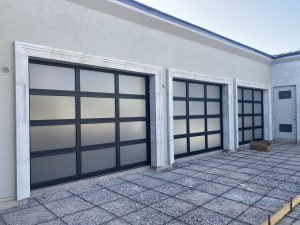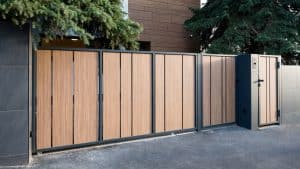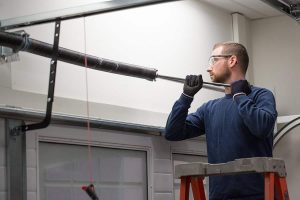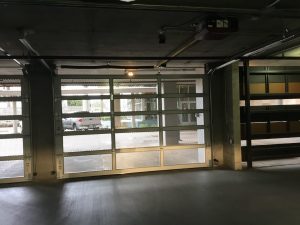Your garage door is one of the heaviest moving parts in your home, and it relies on a complex system of components to operate smoothly. At the heart of this system are the springs—responsible for lifting and lowering the door with ease. When these springs are out of balance, the entire door’s performance and safety are compromised. Understanding garage door spring balance is essential for every homeowner, as improper tension can lead to wear, damage, and even dangerous situations.
In this guide, we’ll discuss why balancing garage door springs is so important, the signs of imbalance, and how professional adjustments can extend the life of your garage door system.
Why Garage Door Spring Balance Matters
The springs in your garage door system—either torsion or extension—carry most of the weight when the door moves. Proper garage door spring balance ensures that the door can be lifted smoothly without putting strain on the opener or other components.
When the balance is correct, the door should remain in place when opened halfway, without moving up or down. An unbalanced garage door requires extra force to lift, which increases wear on the motor and can cause premature failure of cables, rollers, and tracks.
Without timely garage door spring maintenance, the imbalance can worsen, eventually leading to spring breakage—a costly and potentially dangerous problem.
Common Causes of Unbalanced Garage Door Springs
Garage door springs are under constant tension and will naturally wear out over time. Some of the most common causes of imbalance include:
- Normal Wear and Tear – Springs have a limited lifespan measured in cycles (one cycle equals one open and close). As they age, they lose their ability to hold proper tension.
- Improper Installation – Incorrect garage door spring alignment during installation can cause uneven lifting from the start.
- Environmental Factors – Extreme temperature changes can cause metal to expand and contract, affecting spring tension.
- Lack of Maintenance – Without regular lubrication and inspection, springs may rust or weaken.
Knowing the causes of garage door spring problems helps homeowners take preventive action before serious issues occur.
Signs of Unbalanced Garage Door Springs
Recognizing the early signs of unbalanced garage door springs is key to avoiding major repairs. Some of the most common indicators include:
- The garage door looks uneven when opening or closing.
- The door closes too quickly or is difficult to lift manually.
- You hear grinding, popping, or squeaking noises from the springs.
- The opener struggles or makes straining sounds when lifting the door.
- The door won’t stay in place when opened halfway.
If you notice these symptoms, it’s time to schedule a garage door spring service to correct the problem before it leads to more expensive repairs.
The Role of Garage Door Spring Adjustment
A proper garage door spring adjustment restores balance by setting the correct tension so the door can move freely. This process requires specific tools and knowledge of garage door spring tension adjustment to avoid damaging the door or causing injury.
When adjusting springs, the goal is to achieve smooth operation without the opener doing all the heavy lifting. If the springs are too loose, the opener strains; if they’re too tight, the door may spring open unexpectedly. Achieving this precise balance is something that should always be handled by professionals, as improper adjustments can be hazardous.
Garage Door Spring Repair vs. Replacement
In some cases, a simple adjustment is all that’s needed. However, if the springs are worn, rusted, or damaged, garage door spring repair may not be possible, and garage door spring replacement becomes the safer and more cost-effective option.
Springs have a limited life expectancy, and once they’ve reached the end of their cycle count, replacing them ensures that the door will continue to function properly for years. Professional technicians can determine whether adjustment or replacement is the right course of action after a thorough inspection.
How to Balance Garage Door Springs Safely
Many homeowners wonder how to balance garage door springs themselves. While it’s possible to perform a basic balance test—such as manually lifting the door halfway and observing whether it stays in place—actual adjustment should be left to experts.
Garage door springs are under extreme tension and can cause severe injury if mishandled. Professional technicians follow precise steps for garage door spring troubleshooting, using the right tools to adjust or replace springs safely. They also ensure that the door’s other components—like cables, tracks, and rollers—are aligned and in good condition.
The Safety Risks of Unbalanced Garage Doors
A poorly balanced garage door isn’t just an inconvenience—it’s a safety hazard. When springs are unbalanced, the door can suddenly slam shut or shoot open, risking damage to property and injury to people or pets.
Garage door spring safety should always be a priority. If your door is acting unpredictably, do not attempt to force it open or closed. Disconnect the opener and call for professional assistance immediately.
Professional Garage Door Spring Maintenance
Routine garage door spring maintenance is the best way to prevent problems. A professional maintenance visit typically includes:
- Inspecting spring condition and tension.
- Performing necessary garage door spring adjustment or replacement.
- Lubricating moving parts to prevent friction and rust.
- Checking the entire lifting system for alignment and wear.
By investing in regular maintenance, you can extend your spring’s lifespan, improve door performance, and avoid sudden breakdowns.
Why You Should Never Ignore Spring Issues
Ignoring the early signs of spring trouble can result in major garage door spring problems. The longer the imbalance goes unaddressed, the more stress is placed on your opener, cables, and rollers. In severe cases, a broken spring can render your door inoperable, trapping vehicles inside or leaving your home unsecured.
Scheduling timely garage door spring service is far more affordable than dealing with an emergency repair or complete door replacement.
Conclusion: Protect Your Garage Door with Proper Spring Balance
Your garage door’s smooth operation depends on the health and balance of its springs. By understanding the importance of garage door spring balance, recognizing the signs of unbalanced garage door springs, and committing to regular maintenance, you can keep your door safe, reliable, and efficient.
Whether it’s garage door spring adjustment, repair, or replacement, working with experienced professionals ensures that the job is done safely and correctly.
Don’t let small spring issues turn into big, costly problems. Schedule a professional inspection and maintenance service today with Stapley Action Garage Door—your trusted experts in keeping garage doors balanced, functional, and safe year-round.








